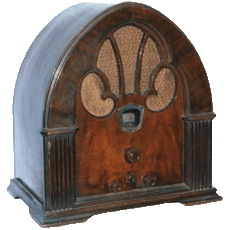09-21-2007, 05:48 PM
1. I wonder why Philco used big pin tubes in this radio (78, 80, 37, 42)? Philco was heavy into loctal in late 1939. Other sets like the 39-770 use octal.
2. Capacitor 88, the volume motor phase shift capacitor, is listed as 30uf 30volt electrolytic. Mine is bad. I subbed a 12.5uf AC motor starting cap and the motor runs. Can this REALLY be electrolytic, or should it be an AC or back to back electrolytics?
3. The RF amp tube has an apparently original 6K7G installed. But the schematic shows a 6J7G, as does the tube placement chart. But the alignment trimmer locations chart shows a 6K7G. This tube has AVC voltage applied, so I would suspect it should be a 6K7G.
4. The detent ball (or whatever) is missing from the bandswitch. In other cases I just installed a ball bearing or stole the ball from another switch. But this one has a tit on the arm above where the ball should be. So it looks like the detent ball has a hole in it. Does anyone know what this part looks like?
I plan on ordering a set of service notes for this radio if available. Maybe that will answer some of the questions.
Thanks for all the time.
Dave
2. Capacitor 88, the volume motor phase shift capacitor, is listed as 30uf 30volt electrolytic. Mine is bad. I subbed a 12.5uf AC motor starting cap and the motor runs. Can this REALLY be electrolytic, or should it be an AC or back to back electrolytics?
3. The RF amp tube has an apparently original 6K7G installed. But the schematic shows a 6J7G, as does the tube placement chart. But the alignment trimmer locations chart shows a 6K7G. This tube has AVC voltage applied, so I would suspect it should be a 6K7G.
4. The detent ball (or whatever) is missing from the bandswitch. In other cases I just installed a ball bearing or stole the ball from another switch. But this one has a tit on the arm above where the ball should be. So it looks like the detent ball has a hole in it. Does anyone know what this part looks like?
I plan on ordering a set of service notes for this radio if available. Maybe that will answer some of the questions.
Thanks for all the time.
Dave



![[-] [-]](https://philcoradio.com/phorum/images/bootbb/collapse.png)


